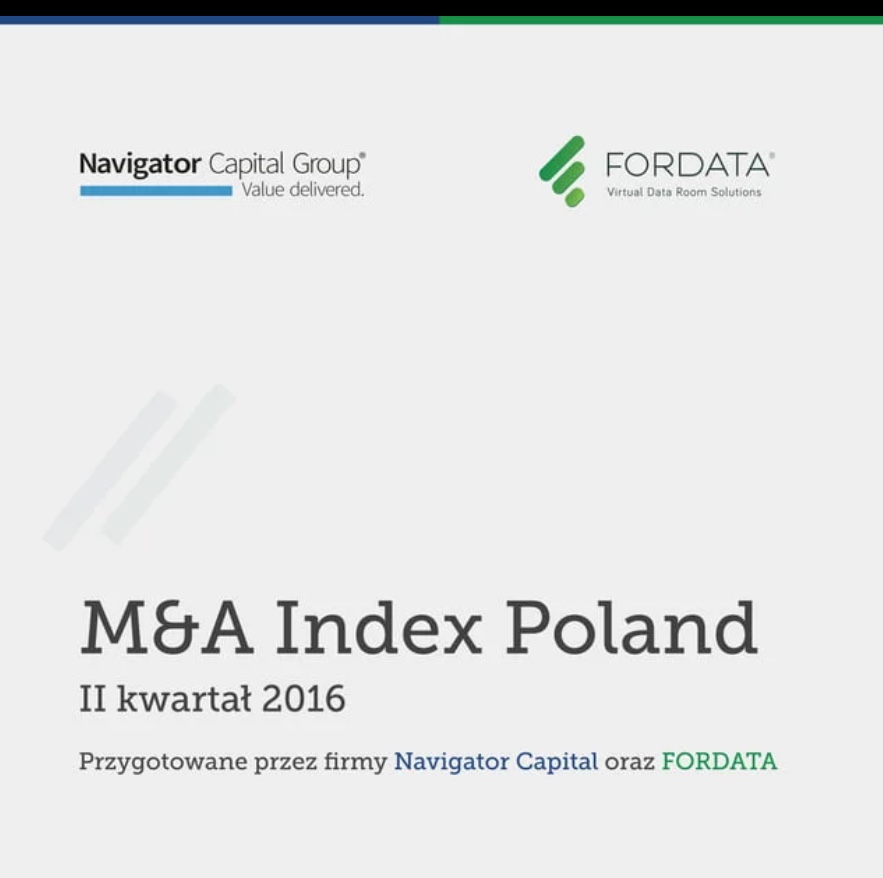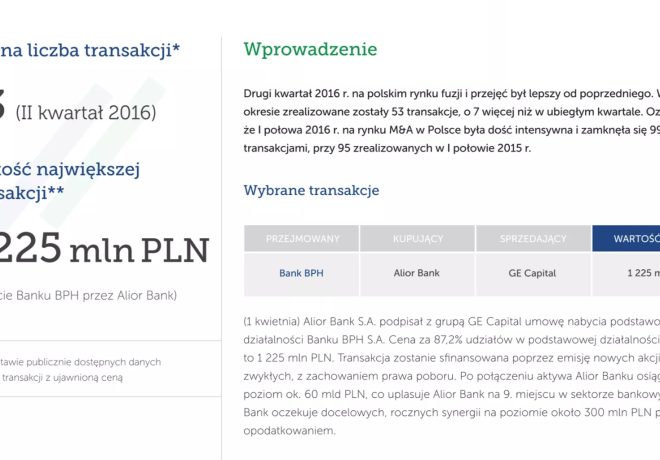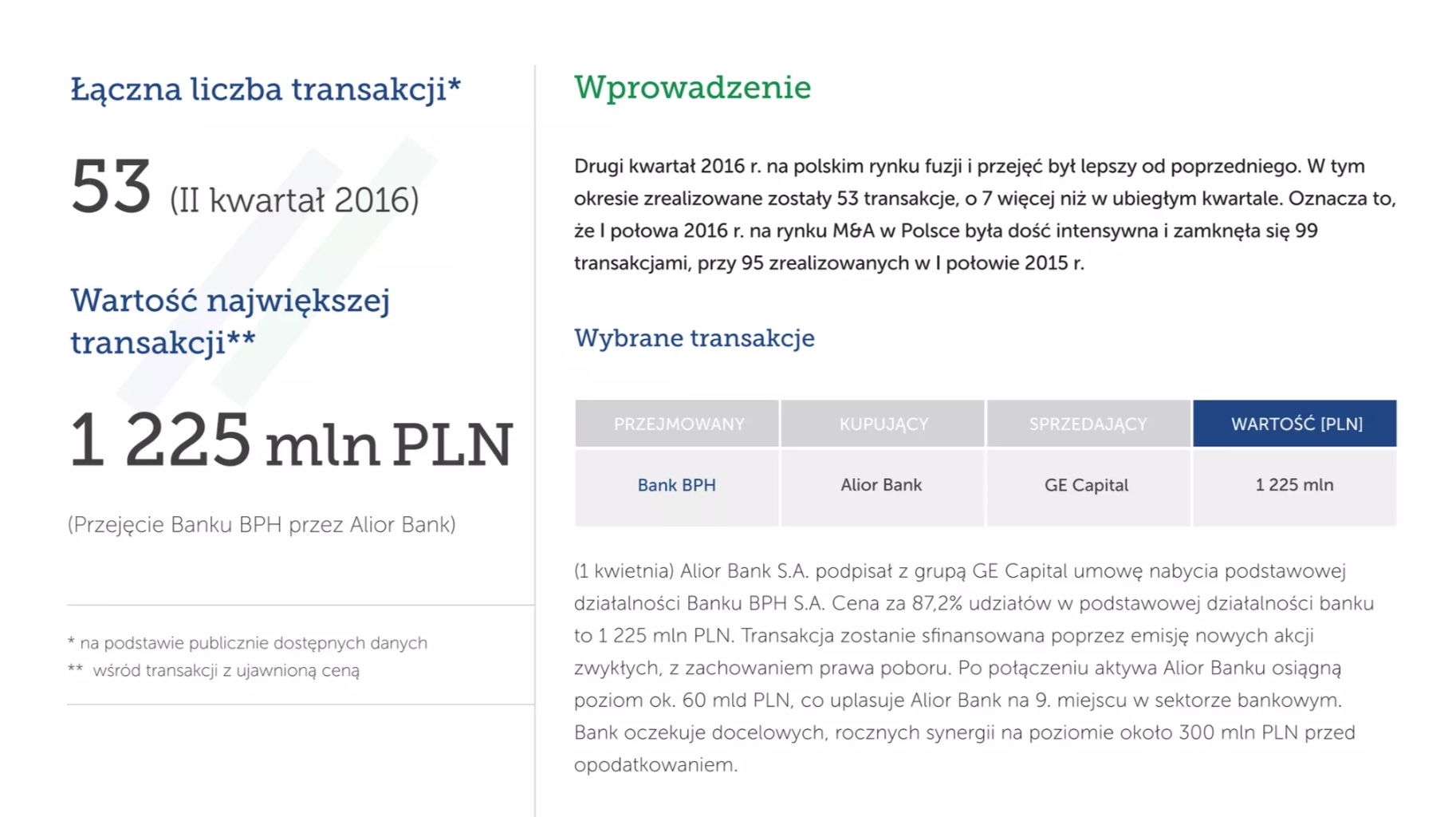
53
łączna liczba transakcji
1.2 mld
wartość największej transakcji (PLN)
15%
popularność Virtual Data Room

Widoczne jest większe zaangażowanie funduszy private equity i inwestorów strategicznych w sektorze nieruchomości komercyjnych – szczególnie magazynów i biur. Spodziewamy się, że w 2016 zwiększy się także ilość transakcji w sektorze Telkom, IT i opieki zdrowotnej. Korzystanie z technologii typu Virtual Data Room, które ułatwiają przepływ poufnych dokumentów i usprawniają komunikację pomiędzy stronami transakcji, stało się synonimem profesjonalnego podejścia do realizacji procesów transakcyjnych. Z technologii korzystają już nie tylko doradcy transakcyjni, ale coraz częściej podmioty oferujące, a także inwestorzy prywatni, którym zależy na zachowaniu bezpieczeństwa informacji. Nasi klienci przyznają, że dzięki temu transakcje domykają się szybciej. Z dostępnych danych wynika, że tym kwartale VDR został użyty podczas 8 transakcji. Obserwacja rynku pozwala jednak założyć, że transakcji zorganizowanych z użyciem VDR było co najmniej dwa razy więcej, jednak niestety nie wszystkie firmy zdecydowały się poinformować o tym rynek.
Chcesz wymienić się wiedzą, podyskutować, zadać pytanie?
Alicja Kukla-Kowalska expert FORDATA
Poprzednie raporty fuzji i przejęć w Polsce
![]()
Jest czołowym dostawcą usługi Virtual Data Room w Polsce i w regionie CEE. Rozwiązanie FORDATA VDR wspiera największe transakcje M&A, IPO, inwestycje Private Equity i prywatyzacje.
W oparciu o autorskie systemy informatyczne, bazujące na technologii Virtual Data Room, pomaga klientom w zarządzaniu dokumentami i komunikacją podczas złożonych procesów transakcyjnych.
Współpracuje z liderami branż, w tym największymi firmami doradczymi, kancelariami prawnymi, bankami, czy funduszami PE/VC z całego świata. FORDATA zrealizowała dotychczas ponad 500 transakcji podnosząc bezpieczeństwo i efektywność projektów o łącznej wartości ponad 40 mld PLN.
![]()
Wraz z Domem Maklerskim Navigator jest czołowym niezależnym doradcą finansowym dla przedsiębiorstw specjalizującym się w transakcjach M&A oraz publicznych i prywatnych emisjach akcji i obligacji. W ciągu ostatnich lat Grupa Navigator zrealizowała ponad 35 transakcji różnego typu.
Partnerzy Navigator przeprowadzili transakcje o łącznej wartości ponad 6,2 mld PLN. Współpraca z międzynarodową siecią firm doradczych zrzeszonych pod szyldem Pandion Partners pozwala skutecznie obsługiwać transakcje międzynarodowe.
Navigator Capital wraz z Domem Maklerskim Navigator zajmują wysokie pozycje w niezależnych rankingach oceniających aktywność podmiotów doradczych na rynku polskim.





